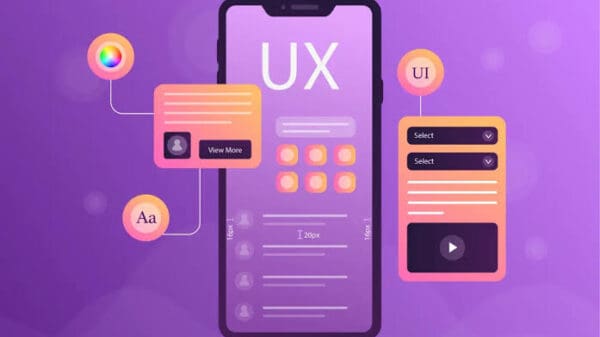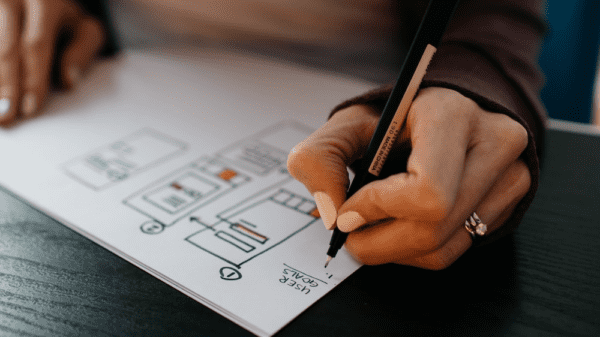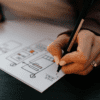Website redesign – two words that often make people nervous and stressed. If you’ve ever gone through a website design or redesign project, you know how painful it can be. The traditional way to design and develop a site is actually broken, completely. By traditional I mean, when you spend a lot of time, like 3 months writing and rewriting copy, designing and redesigning the pages then wait for development to take the site live. By the time you take the site live, it’s usually over budget and possibly already out of date. Nowadays you need to be agile and follow latest project management trends to be efficient and to be happy working on such an interesting project as the redesign of a website.
In 2017 it is critical to have a fresh design as users became picky and design may help you gain or lose the clients. Normally you need to redesign your page every year, yes that frequent because world changes faster than you may think of. And unfortunately, many companies have outdated websites because a complete redesign is incredibly stressful, costly and time-consuming for them. So this article I wanted to focus on one of the most effective agile ways of redesigning your website – growth driven design. And share my GDD experience working for big international companies and promising startups.
Your website is normally your biggest marketing asset and is the centerpiece of all your marketing activities. Normally, the first place people go is the website when looking for more information on your products or services. Your best salesperson is also your website. You’ve probably been hearing more and more about conversion optimization lately, as well as this approach called growth driven design. Actually another buzzword in 2017.
It became very popular because growth-driven design focuses on marketing analysis to set priorities and make improvements on a continual basis. And these incremental updates keep your website changing as quickly as the consumer’s desires, making you stay on top of the design and market trends.
3 pillars of growth-driven design
Let’s look at the main pillars of growth driven design to better understand it:
1. Minimize risks
It is about avoiding the risks of traditional web design by taking a systematic approach to shorten the time to launch, focusing on real impact and continuous learning and improvement.
2. Continuously research, learn and improve
It is about constant research, testing and learning about the users to track website situation and improvements.
3. Design, marketing & sales
Growth-Driven Design is tightly integrated with design, marketing & sales. What we learn about users helps inform and improve design, marketing & sales strategies and tactics.
2 Phases of GDD
Phase 1: Strategy, Wishlist, Launch Pad Website
Phase one starts with strategy. Build a solid foundation based on goals, personas, and research. Basically here you are trying to answer the following questions:
“What are the performance goals that we are trying to achieve with our
Website?” “Where and how would we like to improve?”. You will need to develop the profile of your personas, for example, problems that would like to solve, motivation, industry, job title, preferences, etc. To do that you will need to do quantitative and qualitative research to validate your ideas and answer your questions. Other than that it may give you insights that you would never think of.
In other words, this phase is about evaluating fundamental assumptions about website users; their needs and goals, about doing a research to see if your assumptions are valid. Having identified user’s needs and their points of pain, you develop your strategy. Taking what you’ve learned in your strategy planning, you brainstorm every impactful, creative and innovative idea that you’d like to include on the site, you create a wishlist of things you would like to have on the web. Test them and then prioritize them. Basically, you will have a list of
Test them and then prioritize them. Basically, you will have a list of must-have items and an agile list of things that can be implemented later on, after getting feedback from the clients. To make sure these items will be used. After determining your priorities, develop and launch a website with those core features. It is important to understand that your goal is to get the site live for an audience to give you the feedback needed to make smarter choices in moving into Phase 2.
Phase 2: Iterative Development and Ongoing Improvement
Basically, this phase starts when you have your Launch Pad website live. You still have a long wishlist of impactful items that you’d like to implement on the site. This agile list should be updated on a regular basis. This entire cycle starts with and revolves around the personas who are coming to your website. At each stage of the cycle, continuously ask yourself how this relates and provides value to the personas visiting your website. If at any point it becomes unclear how an action item provides value to or relates to the persona, take a step back and re-evaluate what you’re working on.
The fundamental principle of Growth Driven Design is continuously experimenting, learning and improving your website. In designing the content, consider site usefulness, user experience, conversion rate optimization, stickiness and how to best tailor the site to the targeted persona. Once you have the information architecture in place, you’ll move into wireframing and design, then program and development. GDD is actually closely related to lean marketing principles and shares the “learn quickly what works and discard what doesn’t”.
Growth-Driven Design cycle needs planning to identify the most impactful items at the current moment. And plan to implement the top ones into the current cycle. You need to evaluate performance vs. goals, do an additional research in order to help clarify what action items you should add to your next wishlist and how they should be developed. Brainstorm and prioritize your wishlist based on all of the new data, research and learnings gathered at this point. Normally your KPIs would be the following: boost conversion, improve user experience and build marketing assets like an email list. That means that you need to know which activities directly relate to conversion rate optimization. What improves your user ‘s experience, what makes it easier for them to navigate, how they find what they are looking
For faster and how they may solve their problems in the most efficient way possible.
Don’t forget about personalization – adapting the site, calls-to-action, content offers, etc. to the specific visitor based on the data you know about them. This includes tailoring based
on interests, persona, device, geolocation, referral source or previous actions on your site. And think about marketing assets, how to increase email lists, how to know social accounts of the users, etc.
Create your wish list and prioritize it again, basing your decisions on High / Medium / Low impact on the goals of the website and value to the user. Plan sprint cycle: with an updated and prioritized wishlist, pick the most impactful action items you want to implement in this cycle.
After implementation, see the impact it has on the performance of the website. To measure your experiments you must setup validation, tracking the metrics outlined in the action item.
Collect the data and learn. In the learning stage, you review the information you collected about your website visitors. Based on the information you collected, validate or disprove your hypothesis on your action item card. Did your change impact as you expected?
The last step in the cycle is to now transfer any impactful information you’ve learned in your cycle to other parts of your business. Review previously completed action items to see if you can find any patterns about your users.
Then, Repeat. Go back to the beginning and start planning your next cycle. This cycle repeats itself over and over again each time with a better end result and more learning about your visitors. The more cycles you can complete, the more impact your website has.
The companies who are adopting the Growth-Driven Design methodology are finding huge success in the flexibility and results they are getting. It helps you re-evaluate both the way you approach your existing website and how you approach future redesigns.
Advantages of Growth Driven Design
- You will make sure you don’t lose even a cent because you iterate together with your user, you do it right from the beginning. It allows you to save money on redesigning the website again, providing you notable business results.
- GDD focuses on a data- and audience-analysis driven site launch or redesign intending to make changes based on ongoing learning about visitors’ needs and lead conversions.
- Less risk and more success. It is a smarter, more agile and data-driven approach to web creation with better results and less stress.
- Cost spread out over months; no large up-front costs.
- The website remains up-to-date due to ongoing improvements.
- With monthly checks, the workload is more manageable.
- You meet your user’s needs and expectations.
To sum up, rather than undertaking a site redesign every two years with stale content that no longer aligns with the organization’s priorities, GDD succeeds by making informed performance improvements to your site based on testing, continuous learning, and research that’s derived from visitor behaviors on your site. You do it fast, you do it smart. In the tech world, you need to adapt to the changing circumstances and GDD is a much more adaptive model where businesses can change their marketing plans-of-action based on the conditions and obstacles they encounter.
Ekaterina Novoseltseva is a CMO at Apiumhub – software development hub, which is specialized in web & mobile app design and development.
Ekaterina Novoseltseva is a CMO at Apiumhub – software development hub, which is specialized in web & mobile app design and development. rn
























































































































































































